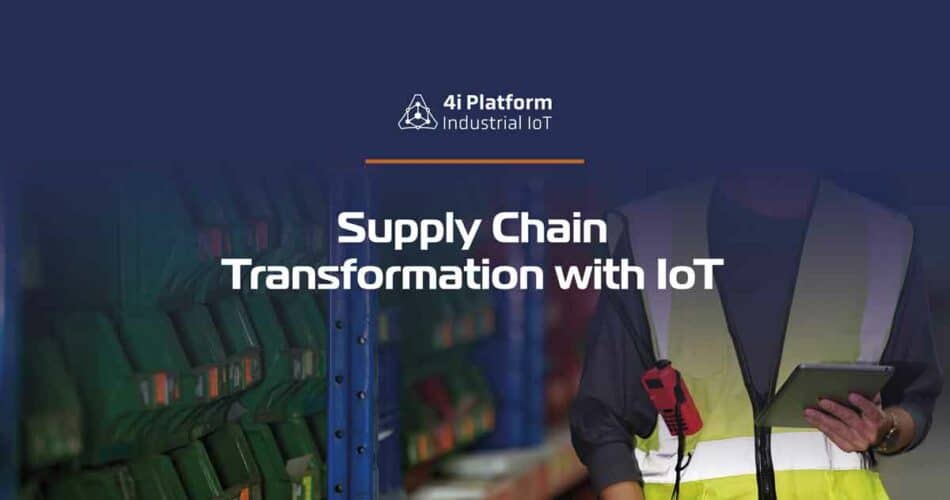The supply chain has been an area of early adoption of technology. Barcoding and RFID were widely used years ago for tracking, while ring scanners have been used for inventory picking in the past decade. The miniaturization and lower cost of computing power have enabled supply chain and manufacturing to enter a new phase in technology evolution and also improve supply chain visibility.
As the Internet of Things (IoT), and its network of sensors and devices, make it possible to create a grid that is more connected, intelligent, and scalable, linear supply chains are rapidly becoming obsolete.
A recent Accenture survey found that nearly one-third of companies have connected IoT devices. Another 17 percent are currently participating in pilots. Nearly nine out of ten companies believe that the IoT can improve their supply chain over the next three years. Another study estimates that it will generate $8 trillion over the next decade. Supply chain and logistics account for $1.9 trillion.
How Will IoT Investments on Supply Chain Visibility Yield Returns?
Visibility is key to success for every supply chain worker. However, they also understand that visibility is not always possible.
The Industrial IoT can improve real-time visibility through advanced sensor networks. It will allow for greater control over disparate processes, from procurement to manufacturing to transportation to final delivery.
Sensors have been tracking the temperature and place of goods for some time now, but businesses can now tighten the integration with several other measurements to aid in tracking.
Questions such as:
- What time has a product or part been exposed to pressure, shocks, and humidity, and for how long?
- Is there a delicate component that was dropped or damaged during transport, even though it is difficult to see with the naked eye?
Businesses in highly regulated and sensitive industries like chemicals or food can reap the benefits of enhanced supply chain visibility. Companies can also use it to improve their reverse supply chain when dissatisfied customers return products.
As these data sources are collected from all over the globe, it is possible to pull them all together in one place. This provides a constant and central view of how a supply chain operates.
The data it generates is what determines the IoT’s value in any industry. In addition, businesses should use analytics tools and data visualization by businesses to gain and understand this information immediately after the event.
This will give them an opportunity to work more closely with partners to make data-driven, time-sensitive decisions based on insights rather than guesswork.
More Remote Manufacturing Capabilities
The IoT can also disrupt manufacturing and supply chains. For example, 3D printers can not only change how manufacturers make parts but also allow elements of supply chains the ability to create the parts. For example, if a cloud of volcanic ash prevents flights from shipping spare parts, digital product plans could be ready to allow the printing of these parts in an emergency.
Printing materials can be ready for use in both normal and remote environments, such as oil rigs.
It is not about improving the physical supply chain. This is about creating a data supply network that ensures the information needed to make those parts is there, securely.
This will enable the right processes and inform decisions.
Beyond Supply Chain Visibility: Predictive Asset Management and the Connected Worker
The availability of sensors drives IIoT’s growth. Sensors in asset management in plants and warehouses are more than just for tracking. They can also transform operations by enabling predictive and preventive maintenance.
Sensors can be fitted to pumps, generators, and other machinery, allowing them to send data straight into an analytics engine. Red flags will fly if something vibrates too much, operates at a higher temperature, or deviates from normal operation. This will enable immediate investigation.
This will allow for immediate investigation. Managers can schedule maintenance for quiet periods if necessary. The IoT-enabled supply chains ensure the delivery of materials to the point where there is a need for them.
New wearable technologies, like smart camera-enabled headsets, will make it easier for workers to identify issues and perform repairs on the ground. These devices can provide hands-free assistance and allow workers to access the most recent manuals right at their disposal.
This lowers the chance of error and allows other experts to double-check the work.
The IIoT gives operations managers the ability to make data-driven decisions. This reduces the likelihood of having to do so because of an unplanned sequence of events.
What You Don’t Know Can Hurt You
The Industrial Internet of Things combines our digital and physical worlds and will transform supply chains as well as manufacturing. It will provide visibility into areas of operations that were not visible before and help to transform supply chains. It will enable manufacturers to properly optimize their operations and diversify their offerings by providing additional data-based services and creating revenue streams.
Manufacturers should begin to test and pilot new IIoT technologies. They also need to build capabilities and experience in-house and through partnerships to guide them through this phase. Organizations that plan properly will be able to thrive and lead this digital disruption rather than suffering disruptions.





